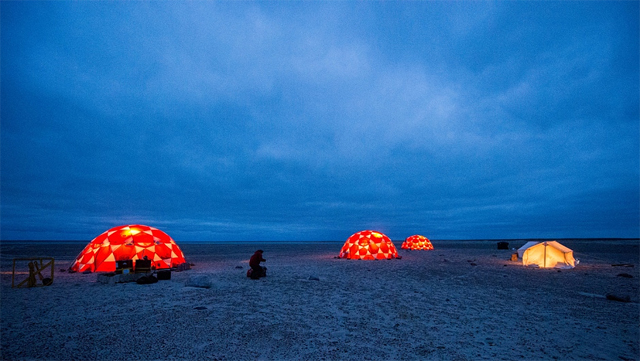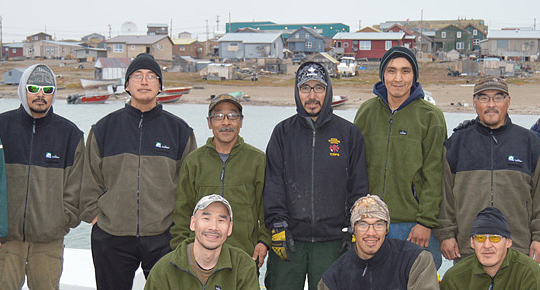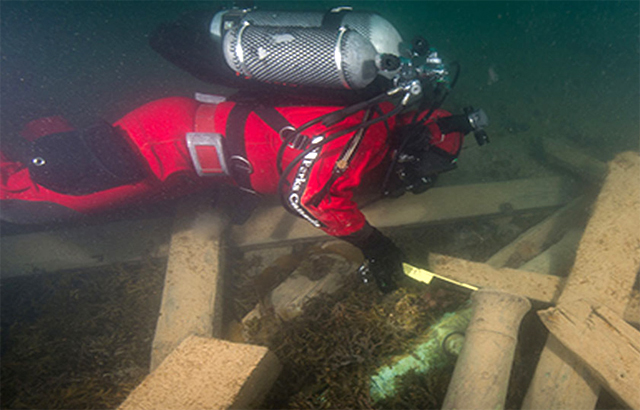Parks Canada hired 17 Inuit to help guard a couple Canadian treasures—the underwater wrecks of two Franklin Expedition ships discovered over the past three years. Jimmy Pauloosie, Jr., an 18-year old from Gjoa Haven, told the CBC last week that the responsibility of being employed in the Guardians program made him feel “pretty impressive.” He added that he feels “happy and proud.” The wreck of the Erebus, one of the two ships from the Franklin Expedition that searched for the fabled Northwest Passage in the 1840s but was lost in the ice, was discovered with the help of the Inuit in 2014. A Canadian research team found the Terror, the other lost ship, in 2016. Inuit traditional knowledge was a key to both discoveries.

In August 2017, four Guardians set up camp on Saunitalik Island, a short ride on a Zodiac away from the site of the Erebus. Another group of Guardians set up camp near the Terror. They watch for polar bears that might threaten the archaeologists who are studying the two wrecks, stay alert for unauthorized ships, and scan the ground for artifacts.
They use satellite phones to keep in touch. Local Inuit are still permitted to fish and hunt in the two areas but others need permits to visit, much less to dive there. Members of the Gjoa Haven community have gotten calls from outsiders asking about guides so they can visit the ships.

The mayor of Gjoa Haven, Joanni Sallerina, told the CBC that his town is glad to be included with the management of the historic sites. Young people are looking for work—half the community is age 24 or younger. He continued that it is their own land and the nearest Guardians camp is located where they hunt anyway. He added that their ancestors salvaged stuff such as metal items from the wrecks. “It’s a real honour to be a part of history, and I do feel the whole community feels that way,” he said. They expect to benefit economically from tourists some day.
A Franklin Interim Advisory Committee, which includes representatives from Inuit organizations, communities, and the governments of Canada and Nunavut, came up with the idea of employing Guardians from the local town. Louie Kamookak, an Inuit member of the committee and an authority on the history of their encounters with people from the South, said that their indigenous knowledge was the key to finding both ships.
But more than that, he argued that many programs in the North are developed and run by Canadians from the South. “A lot of times, the Inuit are just watching as people come up and do their thing.” The way Parks Canada is running this program validates their traditional knowledge, which, he told the CBC, “is just as important as someone with a degree.” Eventually, he hopes the base camp near the Erebus can have Inuit families living there for longer periods of time. Parks Canada indicated that the Guardians program will be followed by greater involvement by the Inuit with the process of finding and documenting artifacts from the lost expedition.

This summer, underwater archaeology teams spent a lot of time preparing for more extensive work on the wrecks in the coming summer seasons. Since 2014, divers have identified the bronze bell from the Erebus as well as brass cannons and a sword handle. After more than 250 hours of dives, 64 items have been recovered. Six people from Gjoa Haven were included as members of an archaeology team working on the ice near the Terror back in April, using a remotely operated vehicle to take photos and videos around the wreck of that ship.